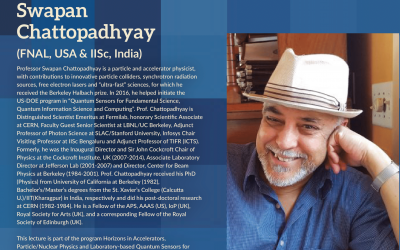Stochastic phase space cooling using microwave techniques in the GHz frequency range have been employed historically in particle colliders, leading to ground-breaking discoveries. ‘Cooling’ increases the likelihood of observing rare physics events. The first important advance -- conceptual and technological -- in this area was stochastic cooling of anti-matter (e. g. ‘antiprotons’) invented by Simon van der Meer (Nobel Prize, 1984), which was instrumental in the discovery of the W and Z Bosons at CERN in 1983 and the ‘top’ quark at Fermilab years later. Stochastic Cooling reduces the random motion of the beam particles through granular sampling and correction of the beam’s phase-space structure, thus resembling a ‘Maxwell's demon’. The extension of Stochastic Cooling from the microwave regime up to optical frequencies and bandwidths, samples and exploits a charged particle’s radiation reaction to affect its own phase space, leading to increases in the achievable cooling rates by three to four orders of magnitude. I will report on the recent world’s first experimental observation and achievement of ‘optical stochastic cooling’ (i.e., relativistic charged particles cooled via feedback from their own optical radiation) in the IOTA storage ring by a Fermilab (Nature volume 608, pages287–292 (2022) team. The method has direct applications towards cooling of exotic unstable particles like Muons for a possible future muon collider and towards fundamental studies of “quantum entanglement” of ‘electric charge’ and ‘virtual quanta’ in an otherwise benign electron-photon Feynman vertex.
About the Speaker: Professor Swapan Chattopadhyay is a particle and accelerator physicist, with contributions to innovative particle colliders, synchrotron radiation sources, free electron lasers and "ultrafast" sciences, for which he received the Berkeley Halbach prize. In 2016, he helped initiate the US-DOE program in “Quantum Sensors for Fundamental Science, Quantum Information Science and Computing”. Prof. Chattopadhyay is Distinguished Scientist Emeritus at Fermilab, honorary Scientific Associate at CERN, Faculty Guest Senior Scientist at LBNL/UC Berkeley, Adjunct Professor of Photon Science at SLAC/Stanford University, Infosys Chair Visiting Professor at IISc Bengaluru and Adjunct Professor of TIFR (ICTS). Formerly, he was the Inaugural Director and Sir John Cockcroft Chair of Physics at the Cockcroft Institute, UK (2007-2014), Associate Laboratory Director at Jefferson Lab (2001-2007) and Director, Center for Beam Physics at Berkeley (1984-2001). Prof. Chattopadhyay received his PhD (Physics) from University of California at Berkeley (1982), Bachelor’s/Master’s degrees from the St. Xavier's College (Calcutta U.)/IIT (Kharagpur) in India, respectively and did his post-doctoral research at CERN (1982-1984). He is a Fellow of the APS, AAAS (US), IoP (UK), Royal Society for Arts (UK), and a corresponding Fellow of the Royal Society of Edinburgh (UK).
This lecture is part of the program Horizons in Accelerators, Particle/Nuclear Physics and Laboratory-based Quantum Sensors for HEP/NP.


